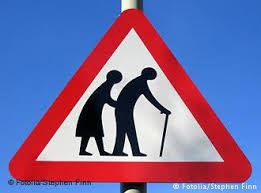Modern Illness
 Loneliness is a modern illness of the body.
oneliness is thought to be a universal, inevitable, even psychological affliction. Not only the United Kingdom but also vast swaths of post-industrial populations across Europe, the United States and Japan report heightened levels of loneliness, with attendant implications for public health.
The findings of a recent loneliness survey – that a third of respondents (55,000 in the UK) often felt lonely, that there was shame attached, that it could affect people of all life stages, that it was connected to social media use and linked with ill health – flesh out the detail behind discussion of a “loneliness epidemic”. But neither the physicality of loneliness, nor its origins, received much emphasis in the study. And as its history makes clear, loneliness is more complex than much of the current analysis suggests.
Loneliness is a modern illness of the body.
oneliness is thought to be a universal, inevitable, even psychological affliction. Not only the United Kingdom but also vast swaths of post-industrial populations across Europe, the United States and Japan report heightened levels of loneliness, with attendant implications for public health.
The findings of a recent loneliness survey – that a third of respondents (55,000 in the UK) often felt lonely, that there was shame attached, that it could affect people of all life stages, that it was connected to social media use and linked with ill health – flesh out the detail behind discussion of a “loneliness epidemic”. But neither the physicality of loneliness, nor its origins, received much emphasis in the study. And as its history makes clear, loneliness is more complex than much of the current analysis suggests.
Before 1800, the English word “loneliness” did not exist. People lived in small communities, they tended to believe in God (which meant they were never really alone, even when they were physically isolated), and there was a philosophical concept of the community as a source of common good. There was no need for a language of loneliness.
 And loneliness is physical. For more than 2,000 years before the development of scientific medicine, physicians had a more holistic approach to mental and physical health. What was eaten and drunk, how one moved, how little (and where) one slept, what the air was like, all influenced a person’s emotions. The 18th-century Scottish physician William Cullen recommended horse-riding to invigorate the fibres of the body and its “spirits”. He advised one Mrs Rae in 1777 to invest in seeing friends, avoiding excessive solitude, and giving the mind “as much attention as [the] body” for optimum health.
And loneliness is physical. For more than 2,000 years before the development of scientific medicine, physicians had a more holistic approach to mental and physical health. What was eaten and drunk, how one moved, how little (and where) one slept, what the air was like, all influenced a person’s emotions. The 18th-century Scottish physician William Cullen recommended horse-riding to invigorate the fibres of the body and its “spirits”. He advised one Mrs Rae in 1777 to invest in seeing friends, avoiding excessive solitude, and giving the mind “as much attention as [the] body” for optimum health.
The Cause of Aging Europe
 Maybe The Cause of Aging Europe can be that people prefer to be alone rather than make family or baby.Social media proves this point.People prefer chat online other than speak face to face.Because When you get bored or get upset ,you can close your phone immediately and find other one quickly.It is a easier way than to communicate face to face.
Maybe The Cause of Aging Europe can be that people prefer to be alone rather than make family or baby.Social media proves this point.People prefer chat online other than speak face to face.Because When you get bored or get upset ,you can close your phone immediately and find other one quickly.It is a easier way than to communicate face to face.
More often than not, the aging of a population is a source of concern, given the potential for higher health care and pension costs, increasing dependency, lower growth, unsustainable fiscal deficits, and intergenerational tensions. Demographic trends are frequently viewed as unstoppable and as an inevitable cause of increasing economic costs. However, individuals and firms change their behavior in response to changing conditions, and policy can help or hinder adaptation to demographic shifts.